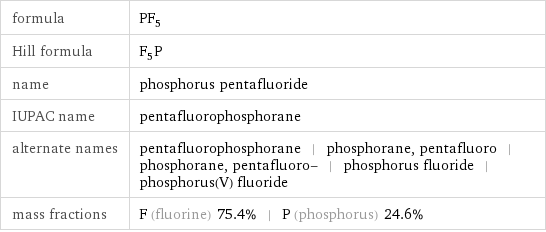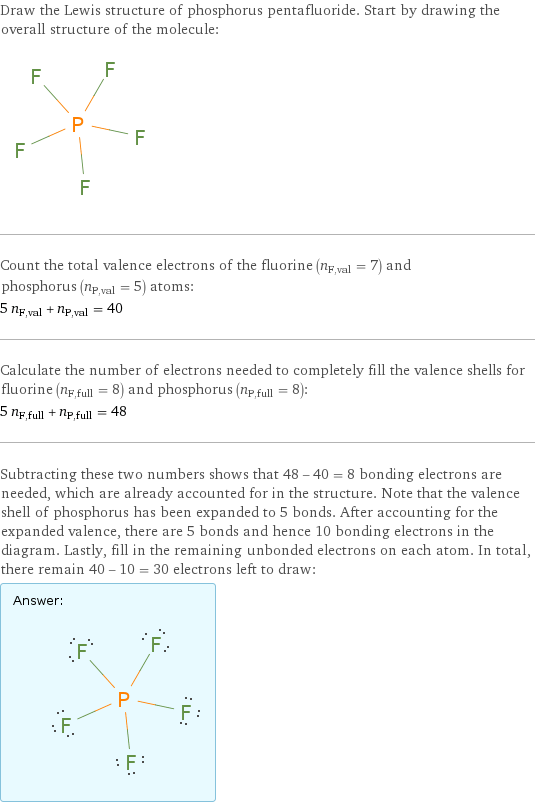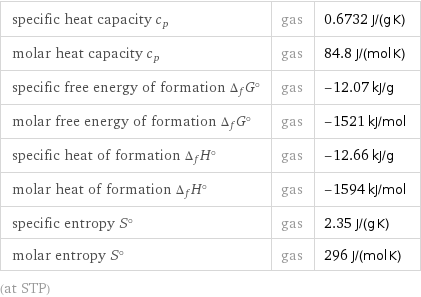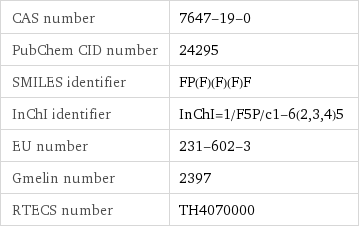Input interpretation

phosphorus pentafluoride
Chemical names and formulas

formula | PF_5 Hill formula | F_5P name | phosphorus pentafluoride IUPAC name | pentafluorophosphorane alternate names | pentafluorophosphorane | phosphorane, pentafluoro | phosphorane, pentafluoro- | phosphorus fluoride | phosphorus(V) fluoride mass fractions | F (fluorine) 75.4% | P (phosphorus) 24.6%
Lewis structure

Draw the Lewis structure of phosphorus pentafluoride. Start by drawing the overall structure of the molecule: Count the total valence electrons of the fluorine (n_F, val = 7) and phosphorus (n_P, val = 5) atoms: 5 n_F, val + n_P, val = 40 Calculate the number of electrons needed to completely fill the valence shells for fluorine (n_F, full = 8) and phosphorus (n_P, full = 8): 5 n_F, full + n_P, full = 48 Subtracting these two numbers shows that 48 - 40 = 8 bonding electrons are needed, which are already accounted for in the structure. Note that the valence shell of phosphorus has been expanded to 5 bonds. After accounting for the expanded valence, there are 5 bonds and hence 10 bonding electrons in the diagram. Lastly, fill in the remaining unbonded electrons on each atom. In total, there remain 40 - 10 = 30 electrons left to draw: Answer: | |
Basic properties

molar mass | 125.96577781 g/mol phase | liquid (at STP) melting point | -83 °C solubility in water | decomposes
Units

Liquid properties (at STP)

vapor pressure | 21432 mmHg (at 21.1 °C)
Units

Thermodynamic properties

specific heat capacity c_p | gas | 0.6732 J/(g K) molar heat capacity c_p | gas | 84.8 J/(mol K) specific free energy of formation Δ_fG° | gas | -12.07 kJ/g molar free energy of formation Δ_fG° | gas | -1521 kJ/mol specific heat of formation Δ_fH° | gas | -12.66 kJ/g molar heat of formation Δ_fH° | gas | -1594 kJ/mol specific entropy S° | gas | 2.35 J/(g K) molar entropy S° | gas | 296 J/(mol K) (at STP)
Chemical identifiers

CAS number | 7647-19-0 PubChem CID number | 24295 SMILES identifier | FP(F)(F)(F)F InChI identifier | InChI=1/F5P/c1-6(2, 3, 4)5 EU number | 231-602-3 Gmelin number | 2397 RTECS number | TH4070000
Toxicity properties

RTECS classes | other